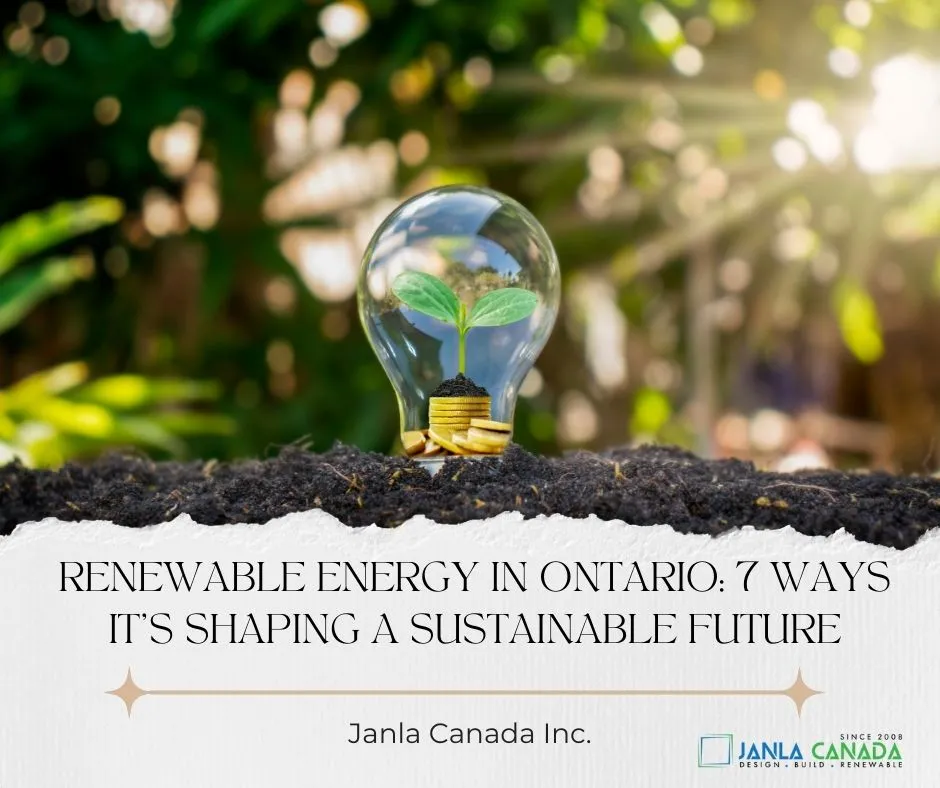Ontario is leading the charge in renewable energy, setting a benchmark for sustainability and environmental responsibility. With innovative projects and ambitious goals, the province has embraced a greener future by prioritizing renewable energy sources like hydro, wind, and solar power. Let’s explore seven key ways Ontario’s renewable energy initiatives are shaping a sustainable tomorrow.
1. Phasing Out Coal Power
Ontario became the first jurisdiction in North America to eliminate coal-fired electricity generation completely. This bold move reduced greenhouse gas emissions by 30 million tons annually, making a significant impact on air quality and public health.
2. Hydroelectric Power Dominance
Hydroelectricity accounts for a large share of Ontario’s renewable energy mix. Utilizing its extensive rivers and waterways, Ontario has developed numerous hydroelectric plants that provide a steady and reliable power source for millions of residents.
3. Expanding Wind Energy
Ontario has over 5,000 megawatts (MW) of installed wind energy capacity, making it a leader in wind energy generation in Canada. Wind farms scattered across the province generate clean electricity, contributing significantly to Ontario’s renewable energy targets.
4. Advancing Solar Power
Ontario’s sunny days aren’t going to waste. Solar energy projects, from residential rooftop panels to large-scale solar farms, are generating clean electricity and reducing dependency on non-renewable sources. Homeowners are also increasingly adopting solar technology through government incentives and programs.
5. Investments in Energy Storage
One of the challenges of renewable energy is intermittency. Ontario is investing in advanced energy storage solutions, such as batteries and pumped storage, to store excess energy for use during peak demand, ensuring a stable and reliable energy grid.
6. Supporting Bioenergy Innovations
Bioenergy, derived from organic waste like agricultural byproducts and municipal waste, is another pillar of Ontario’s renewable energy strategy. This technology reduces landfill waste and generates clean energy while promoting a circular economy.
7. Green Jobs and Economic Growth
The renewable energy sector in Ontario has created thousands of green jobs in construction, technology, and maintenance. By transitioning to cleaner energy, the province is fostering economic growth while addressing climate change.
Benefits of Renewable Energy in Ontario
- Reduced Greenhouse Gas Emissions: Clean energy sources significantly cut harmful emissions.
- Economic Stability: Renewable energy investments create jobs and reduce energy import dependency.
- Healthier Communities: Cleaner air leads to better public health outcomes.
- Future Resilience: A renewable energy grid is more resilient to fluctuations in fossil fuel markets.
How You Can Support Renewable Energy in Ontario
- Adopt Solar Panels: Generate your own electricity and reduce your energy bills.
- Choose Green Energy Plans: Many utilities offer plans that prioritize renewable energy.
- Advocate for Policies: Support local and provincial policies that expand renewable energy projects.
- Educate and Participate: Learn more about renewable energy and share its importance with your community.
Conclusion
Ontario’s renewable energy journey is a testament to what’s possible when innovation meets commitment. By phasing out coal, harnessing hydro and wind power, and embracing solar and bioenergy, the province is leading Canada toward a greener, more sustainable future.
Whether you’re an individual, a business owner, or an investor, there’s never been a better time to get involved in Ontario’s renewable energy movement. Together, we can ensure a cleaner, healthier planet for generations to come.


 Canadian
Canadian